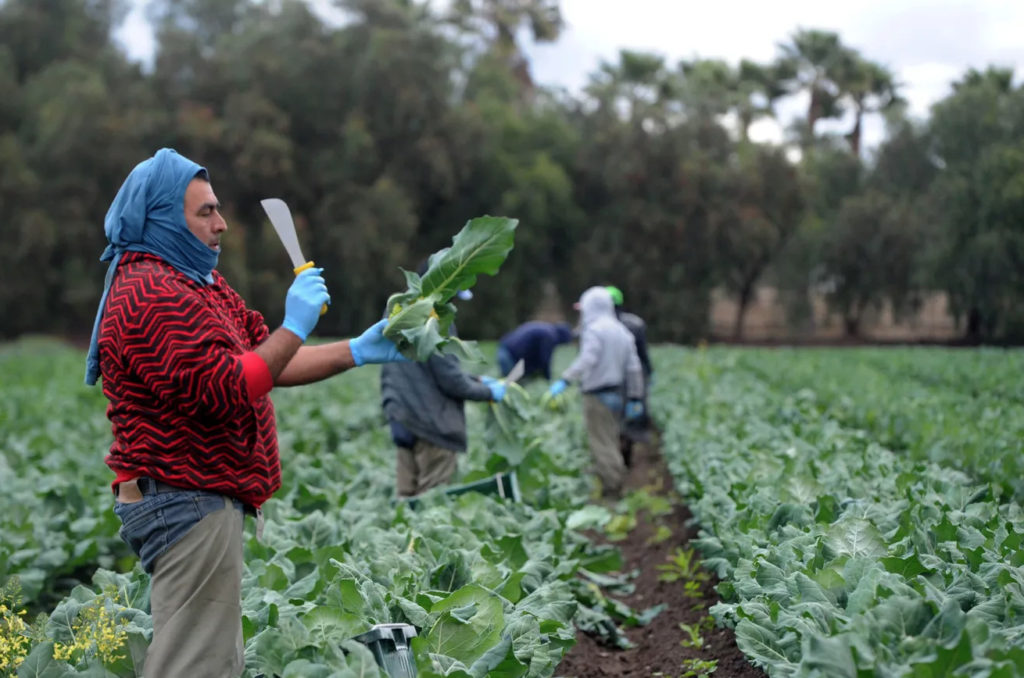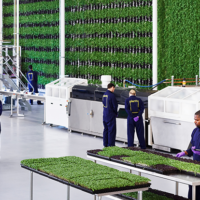
Image Source: USA Today
Every week we track the business, tech and investment trends in CPG, retail, restaurants, agriculture, cooking and health, so you don’t have to. Here are some of this week’s top headlines.
Meat plants, farms, warehouses and packaging factories across the globe are reporting early positive cases of coronavirus that raise alarm over production disruptions. The infections speak to a growing threat to the world’s food supplies.
Meanwhile, the pandemic could lead to a growth of online grocery sales over the long term. Nearly one-third of US households have used online grocery services over the past month. Workers at big retailers have voiced concerns over their safety. Whole Foods and Instacart employees launched nationwide protests this week demanding for more sick pay and protections for those working through the pandemic.
The COVID-19 pandemic has put more than 10 million independent restaurant workers at risk of losing their jobs for good. Across sectors, businesses are being forced to pivot their business models as consumers go on lockdown and change their buying habits. This round-up features many of the ways the pandemic is impacting all parts of the food industry.
In an effort to do our part and support the community we love so dearly, we have compiled a list of resources and organizations that are providing support to those in need. We are also offering free job postings to anyone who is looking to employ people impacted by the COVID-19 pandemic.
- Resources: We have compiled a database of resources for those in the food industry impacted by the pandemic here. Please add your own resources as well.
- Jobs: We need to band together to support everyone across the food system who has lost their job due to the pandemic. Use code “coronavirusfoodjobs” to post remote or remote-friendly food jobs on our job board for free.
We need your support as well. Producing our newsletter takes a lot of time and resources, and we need to change our business model to keep it going. To date, we’ve funded our work through our events, sponsorships and consulting, which are all on hold due to the pandemic. If you find our newsletter to be a valuable resource, we hope you will consider making a one time or monthly contribution, so we can keep the newsletter going and free for those who can not afford a subscription fee. Whether it’s $5 or $500 every bit helps and shows us that you value our work. Not able to contribute right now? You can help by sharing our newsletter with friends and colleagues.
Check out our weekly round-up of last week’s top food startup, tech and innovation news below or peruse the full newsletter here.
1. The Workers Who Supply the World’s Food Are Starting to Get Sick – Bloomberg
In all likelihood, the number of cases will keep going up at meat plants, farms, warehouses and packaging factories across the globe. The infections speak to a growing threat to the world’s food supplies.
2. Nearly One Third of US Households Shopped for Groceries Online in the Past Month, Report Says – Grocery Dive
Forty million, 31% of US households, have used online grocery services like home delivery and pickup over the past month. This is more than double the amount of monthly users since August 2019.
3. Whole Foods Workers Launch Sickout Protest. How Many Isn’t Clear – Bloomberg
They’re demanding more sick pay and protections for grocery store employees working through the pandemic.
4. Home Cooks Trapped by Coronavirus Are Flocking to Meal Kits – Eater
Blue Apron and HelloFresh have seen surges in demand and investor interest over the last few weeks, as home cooks avoid grocery stores.
5. If the Stimulus Package Fails Independent Restaurants, It Fails America – Eater
The deal isn’t good enough for small business owners or millions of service workers. There’s some hope to be found in the newly established loan program, but it’s not enough.
6. US Visa Confusion in Mexico Keeps Out Agriculture Workers – Reuters
Restricted visa services, quickly evolving regulations and increased border controls risk wider labor shortages in the US produce industry that may leave grocery stores scrambling for fruits and vegetables.
7. Instacart’s Gig Workers Are Planning a Massive, Nationwide Strike – Vice
Amid the coronavirus pandemic, the grocery delivery company has refused to offer its 175,000 gig workers basic protections like hazard pay, hand sanitizer and paid leave for those with pre-existing health conditions.
8. Amazon Picks Southern California for Second Grocery-Concept Site – Bloomberg
The unnamed chain is distinct from the company’s Whole Foods business and cashierless convenience stores.
9. DoorDash Now Delivers from Over 1.8K Convenient Stores Nationwide – TechCrunch
DoorDash is expanding beyond food to deliver household essentials from convenient stores across the US.
10. Panic Buying Strains the World’s Food Banks – Bloomberg
As the numbers of unemployed and needy rise, many more people are seeking food relief.
11. Amid Difficult COVID-19 News from Around the World, There’s Hope in the Food System – Food Tank
Organizations across the food system are rushing to the defense of restaurants, service workers and people who are food insecure. Food Tank is keeping a running list of 40+ groups you can support with money, donated food or volunteer time no matter where you live.
12. The Moment for Food Sovereignty Is Now – Civil Eats
Many gardeners are beginning to see food production as a collective effort—one that has the potential to respond to historical inequities and re-frame yesterday’s Victory Garden in the vein of today’s food justice movements.
Our newsletter is the absolute easiest way to stay on top of the emerging sector, so sign up for it today and never miss the latest food tech and innovation news and trends, Already signed up? Share the love with your friends and colleagues!





